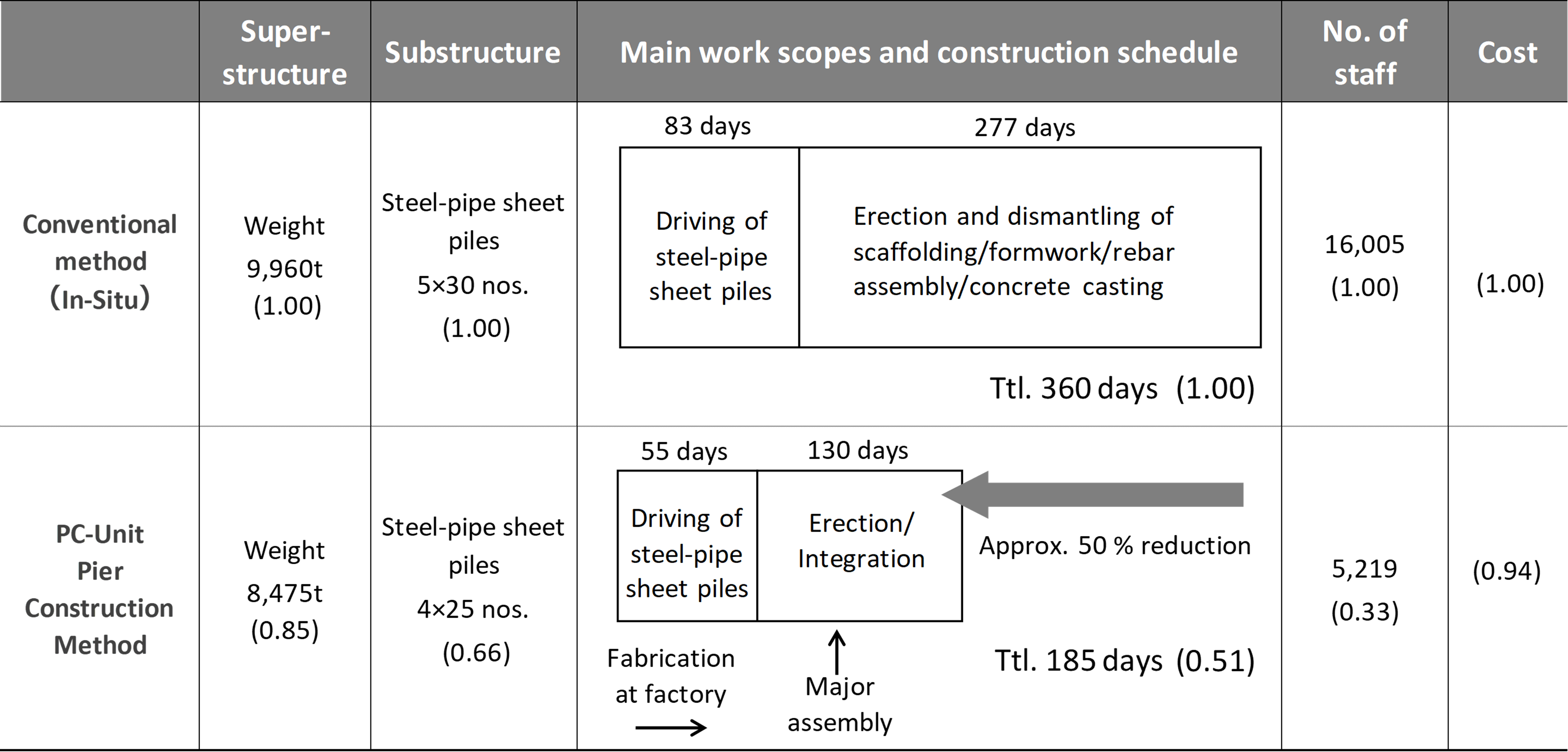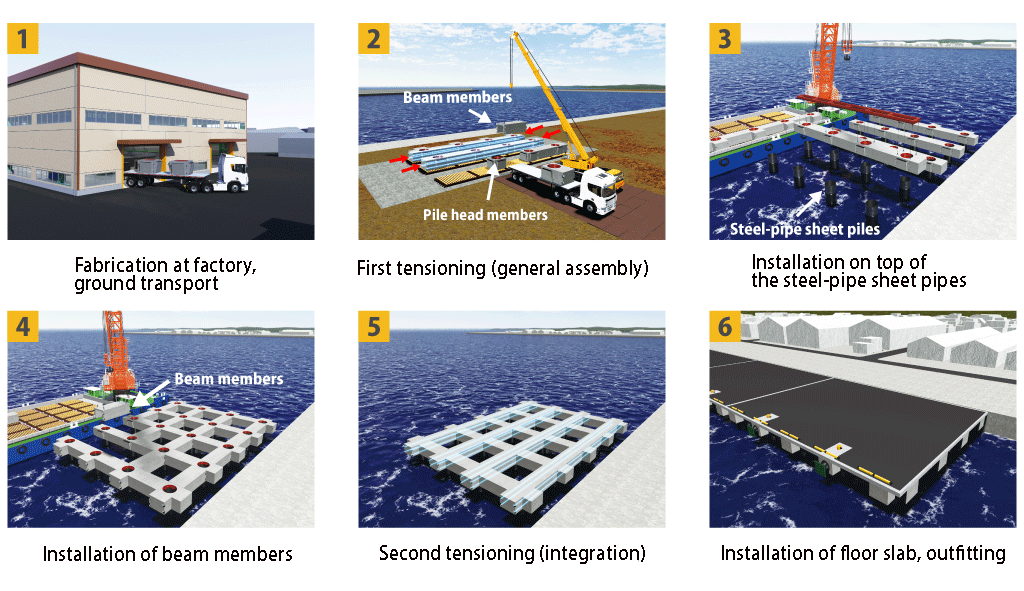This Page is Home![]() Updates
Updates
What's New
Penta-Ocean Construction Co., Ltd.
Takuzo Shimizu, President, CEO and Representative Director
Obtained “Examination and Certification of New Coastal Technologies Developed by Private Companies” for “PC-Unit Pier Construction Method®”
Tokyo, Japan - Apr. 11, 2023 - Penta-Ocean Construction jointly developed the “PC-Unit Pier Construction Method” with Nippon P.S. Co., Ltd., the National Institute of Maritime, Port and Aviation Technology, the Port and Airport Research Institute, and Tokyo Institute of Technology, and acquired the “Examination and Certification of New Coastal Technologies Developed by Private Companies (Certificate No. 22003)” from the Coastal Development Institute of Technology.
Conventionally, the construction of the pier superstructure involves a series of offshore operations following the steel-pipe piles driving, including the assembly and disassembly of scaffolding and formwork supports, reinforcement assembly, and concrete casting. In recent years, precast concrete technology has been gaining attention in the context of productivity improvement and shortening construction periods. In the construction of piers, the site precast method is commonly used, in which the superstructure members are fabricated in a production yard near the site, and then assembled and integrated with the driven steel-pipe piles using a crane barge.
”PC-Unit Pier Construction Method®” is a construction method in which the factory-manufactured superstructure's components are unitized to enable ground transportation, and assembled on site. The innovative shape of the pile head and the beam members enable the assembly without temporary supports, and a tensioning joint method using PC steel strands is used to connect the members. In addition, by using prestressed concrete*1 for the beams of the superstructure and adopting a reverse U-shaped cross-sectional shape to reduce weight, it is possible to reduce the number of piles required in piers where seismic inertia forces are dominant. While it is said that precast concrete construction methods are generally more expensive than conventional in-situ concrete casting, by reducing the number of piles, the total cost can be maintained at the same level as using the conventional method.
According to the performance verification results for an assumed 33m wide x 125m long vertical-pile pier (water depth: 10m), the superstructure using this construction method is 15% lighter than conventional in-situ concrete casting, allowing a 33% reduction in the number of piles. In addition, this method is expected to contribute to productivity improvement, shortening the construction period by approximately 50% and reducing the on-site personnel by 66%, through elimination of on-site offshore works such as assembly/disassembly of formwork, rebar assembly, and concrete casting.
Therefore, in addition to the “shortening construction period effect”, precast construction has a high “labor-saving effect” for on-site work. Consequently, the technology will make a high contribution to “Work Style Reform”, as well as “enhanced safety” due to the reduction of offshore works, and “environmental impact reduction” by reducing CO2 emissions from work vessels. As the Ministry of Land, Infrastructure, Transport and Tourism is in the process to introduce a method to comprehensively evaluate the various effects mentioned above on top of conventional economic efficiency factors from a Value for Money (VFM) perspective, further promotion of the precast construction method is expected.
Going forward, we plan to add the “PC-Unit Pier Construction Method®” to our precast construction solutions, and strive to further contribute to the productivity improvement in port and harbor construction.
*1 A concrete structure prestressed during fabrication to provide compressive stress to offset tensile stress in the concrete



